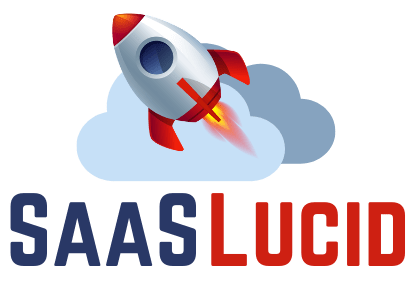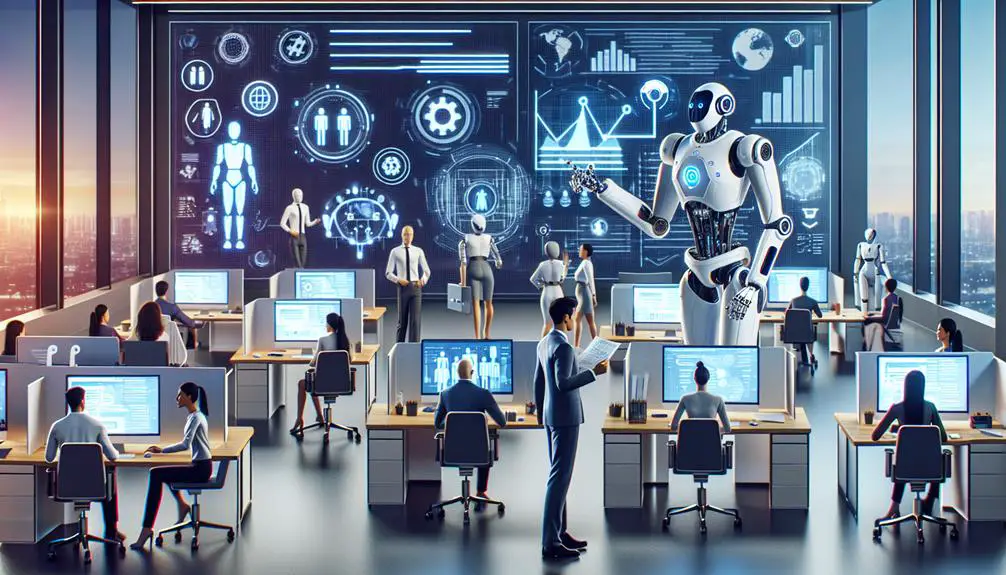We're seeing AI generators change the job market in big ways. They're automating many tasks, which could replace 85 million jobs by 2025. But they'll also create 97 million new roles, many in creative and problem-solving areas. AI is making recruitment faster and smarter, giving both employers and job seekers an edge. Jobs now need more specialized skills, staying ahead with lifelong learning is key. Virtual agglomeration opens up new opportunities by breaking geographical barriers and boosting digital trade. To understand all the ways AI is reshaping work and the skills we need, let's keep exploring.
Contents
Key Takeaways
- AI generators automate repetitive tasks, freeing workers for more creative and strategic roles.
- AI-driven tools streamline recruitment, enhancing efficiency and accuracy in hiring processes.
- New job opportunities emerge in data science, machine learning, and AI-related fields.
- Continuous learning and upskilling become essential to stay competitive in an AI-driven job market.
- Virtual agglomeration and digital ecosystems create dynamic and geographically independent job opportunities.
AI's Impact on Employment
AI is reshaping the job market by automating some roles and creating new opportunities. This change affects both the jobs available and the skills we need. AI technology is expected to automate 85 million jobs globally by 2025. These jobs are often routine tasks that machines can do faster and more efficiently than human workers.
But it's not all about job loss. AI will also create 97 million new jobs. These new roles will need different skills, such as managing AI systems or working in industries transformed by AI. For example, intelligent manufacturing is one area where AI is driving significant growth.
Automation doesn't just replace jobs; it changes them. When AI takes over routine tasks, human workers can focus on more complex and creative tasks. This shift can boost labor demand in areas that require human creativity and problem-solving.
The impact of AI on employment is complex and uncertain. It depends on how quickly industries adopt AI technology and how well workers adapt.
Virtual Agglomeration's Role
Virtual agglomeration is breaking down geographical barriers and creating new job opportunities. With AI technology, we see an uptick in job creation across various sectors. This shift isn't just about more jobs; it's about new kinds of jobs that demand new skills.
Digital trade is booming. Companies can now operate and trade globally without a physical presence. This shift from offline to online opens up roles in digital marketing, e-commerce, and IT. The need for skills in these areas is growing fast.
Real-time data exchange and collaboration have become seamless. Enterprises can now share information instantly, thanks to digital technologies. This trend boosts productivity and innovation. The synergy of big data and the Internet of Things (IoT) is at the heart of this transformation. These technologies enable more efficient operations and smarter decision-making.
Virtual agglomeration fosters a digital ecosystem where businesses can thrive. It's not just about technology but how we use it to connect, collaborate, and innovate. These changes create a dynamic job market that rewards adaptability and continuous learning.
As we embrace these digital trends, we're shaping a future filled with opportunities.
Recruitment and AI Tools
Recruitment is evolving rapidly as we harness the power of AI tools to find the perfect candidates efficiently. For years, recruiters have used AI to sift through applications and identify ideal candidates.
As we move into 2024, job seekers are also turning to AI tools like Teal for resume building and job tracking.
AI tools streamline the recruitment process by automating repetitive tasks. This automation saves time and boosts efficiency for both employers and job seekers. Employers can quickly identify the best candidates without wading through hundreds of resumes. Job seekers, on the other hand, can tailor their applications more effectively using AI insights.
The job market is becoming more competitive. Both employers and job seekers are adopting AI solutions to gain a competitive edge. These AI solutions enhance the hiring process, making it faster and more accurate. For instance, AI can match candidates' skills with job requirements, ensuring a better fit.
The trend of using AI in recruitment is only expected to grow. As we embrace these tools, we're setting a new standard for efficiency and accuracy in hiring. AI isn't just a tool; it's a game-changer in recruitment.
Transformation of Job Roles
While AI tools revolutionize recruitment, they're also reshaping job roles across various industries. AI systems automate repetitive tasks, freeing us up for more complex responsibilities. As a result, new roles are emerging that require specialized skills in data science and machine learning engineering. The job market dynamics are shifting, making it essential for us to adapt.
Human workers remain essential for training AI systems, maintaining them, and ensuring they function correctly. This collaboration between humans and AI highlights a symbiotic relationship. The integration of AI is not just about replacing jobs but transforming them.
To stay competitive in this evolving job market, continuous learning and upskilling are important. We need to develop new skills and adapt to new technologies. This transformation emphasizes the importance of lifelong learning.
Here's a snapshot of the transformation:
| Traditional Role | New Role | Skills Required |
|---|---|---|
| Data Entry Clerk | Data Scientist | Data Analysis, Programming |
| Customer Service Agent | AI Trainer | AI Training, Communication |
| Marketing Analyst | Machine Learning Engineer | Machine Learning, Coding |
| HR Specialist | AI System Manager | AI Maintenance, HR Skills |
| Production Line Worker | Automation Supervisor | Robotics, System Monitoring |
New Opportunities and Challenges
As AI generators open up new job opportunities in fields like machine learning and data science, they also present unique challenges we must address. The job market is rapidly changing, and companies are enthusiastic for AI-driven solutions to improve efficiency. Machine learning engineering and data science roles are in high demand, offering exciting prospects for those with the right skills.
However, the integration of AI in the workforce isn't without its hurdles. Job displacement is a significant concern as automation takes over repetitive tasks. We must focus on developing transferable skills that can adapt to various roles. This adaptability will help us stay relevant in a shifting job landscape.
Creatives may find themselves less vulnerable to these changes. Yet, the swift pace of AI evolution means everyone must stay informed and flexible.
Legal and governmental policies play a significant part in mediating AI's impact. They promote fair workforce integration and protect employee rights.
Frequently Asked Questions
How Is Artificial Intelligence Changing the Job Market?
We're seeing AI change jobs by automating tasks, which impacts millions. Some roles shift, while new ones in AI fields emerge. We must keep learning and adapting to balance job loss with innovation and growth opportunities.
How Artificial Intelligence Is Changing the Workplace?
We see AI transforming the workplace by automating tasks, boosting productivity, and creating new roles. Employees must learn new skills to stay competitive. It's changing how we work and what skills we need to succeed.
How Artificial Intelligence Is Transforming the Hiring Process?
We're seeing AI transform hiring by identifying ideal candidates and managing applications efficiently. Tools like Teal help job seekers with resumes and tracking, making the process smoother for everyone. AI's role in recruitment is only growing.
How Artificial Intelligence Is Changing the Industry?
We're seeing AI change industries by automating tasks, which boosts efficiency. It's not just replacing jobs; it's creating new ones. We must adapt, embrace lifelong learning, and upskill to stay relevant in this evolving landscape.

